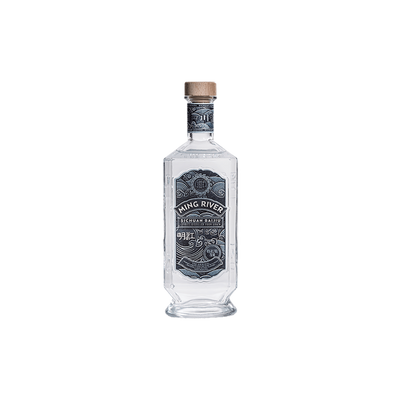Baijiu
What is Baijiu?
Baijiu is a category of Other Specialty spirits that represents China's national drink and the world's most consumed spirit by volume. This clear, potent grain alcohol typically ranges from 40% to 60% ABV and gets produced through solid-state fermentation using sorghum as the primary ingredient, often blended with rice, wheat, corn, or other grains. What truly defines baijiu is its distinctive production method using qu (a solid fermentation starter containing wild yeasts and bacteria) and its classification into four main aroma profiles: strong, sauce, light, and rice, each offering dramatically different flavor experiences from floral and fruity to intensely funky and complex.
Learn More About Baijiu
What makes Baijiu unique?
Baijiu stands apart from other spirits through its ancient solid-state fermentation process using a starter culture called qu, which creates complex flavor compounds impossible to achieve with liquid fermentation methods used in whiskey or vodka production. The spirit's four distinct aroma categories—strong, sauce, light, and rice—offer flavor profiles ranging from fruity and floral to intensely funky and umami-rich, unlike anything found in Western distilling traditions. While most specialty spirits rely on specific ingredients or aging techniques for character, baijiu's uniqueness comes from its microbial fermentation ecosystem that has been cultivating wild yeasts and bacteria for over a millennium.
How is Baijiu made?
Baijiu production starts with grains like sorghum, rice, wheat, or corn that get fermented in earthen pits, clay jars, or stone vessels using a solid-state fermentation process that's wildly different from most other spirits. The magic happens when distillers add qu, a fermentation starter made from wheat, barley, or peas that's been inoculated with wild yeasts and bacteria, creating complex flavors during the weeks-long fermentation period. After fermentation, the grain mash gets distilled in traditional pot stills, often multiple times, then aged in ceramic or steel containers rather than wooden barrels, which preserves the spirit's clean, intense character.
How do you drink Baijiu?
Baijiu is traditionally consumed neat at room temperature in small portions, sipped slowly from tiny ceramic or glass cups during communal meals and toasts. While shots are common in social settings, the spirit's complex flavors shine when savored gradually rather than knocked back quickly. Modern bartenders are increasingly incorporating baijiu into cocktails, particularly those with Asian-inspired ingredients like lychee, ginger, or green tea, where its unique grain-forward profile adds depth without overwhelming other flavors.
How do I choose a good Baijiu?
Start with the aroma profile that appeals to you—strong aroma (濃香型) offers fruity, sweet notes perfect for beginners, while sauce aroma (醬香型) brings complex, umami-rich flavors that work beautifully in stirred cocktails. If you're mixing drinks, lighter rice aroma (米香型) baijius won't overpower delicate ingredients like citrus or floral elements, whereas the funky, earthy flavors of strong aroma types can stand up to bold mixers like ginger beer or dark fruit juices. Look for reputable brands like Jiannanchun or Wuliangye at better liquor stores, and don't be afraid to ask the staff for guidance—most baijiu bottles include English descriptions of their flavor profiles these days.
Nutritional Information
Typical Calorie Range per Ounce: 64-70 calories
Typical Carbohydrate Range per Ounce: 0-0.1 grams
Typical Sugar Range per Ounce: 0 grams
Typically Gluten Free: No
Most baijiu contains gluten since it's commonly made from sorghum combined with wheat, barley, or other gluten-containing grains. While some producers use only sorghum and rice, the majority include wheat in their mash bill. Always check the specific product label and contact the manufacturer directly to confirm gluten-free status if you have celiac disease or gluten sensitivity.
Scrolled this far? Your reward? Baijiu Trivia!
- Baijiu outsells every other spirit on the planet by an astronomical margin – we're talking about 10 billion liters consumed annually, which makes vodka look like a niche product. To put that in perspective, the entire global whiskey market combined doesn't even come close to what China drinks in baijiu every single year.
- The most expensive bottle of baijiu ever sold went for $1.3 million at auction in 2021, making it pricier than most rare Scotch whiskies or cognacs. The bottle was a 1958 vintage Wuliangye that had been aged for over 60 years – proving that serious collectors aren't just hunting for bourbon and single malts.
- Baijiu production relies on a solid fermentation starter called "qu" that contains wild yeasts and bacteria collected from the environment around each distillery. This means every baijiu producer literally captures the terroir of their specific location in microscopic form, making each brand's flavor profile impossible to replicate elsewhere.
- There are four distinct aroma categories of baijiu, and "sauce aroma" baijiu gets its name because it genuinely smells like Chinese soy sauce during fermentation. The most famous sauce aroma baijiu, Moutai, was reportedly Chairman Mao's favorite drink and is still served at state dinners in China today.
- Some baijiu distilleries have been operating continuously for over 600 years, making them older than most European whiskey distilleries by centuries. Jiannanchun claims to have been producing baijiu since 1408, during the Ming Dynasty – that's older than the printing press and predates Columbus reaching the Americas by 84 years.
Higher-proof spirits can be intense. Mix carefully, taste thoughtfully, and enjoy responsibly.
Gift message (optional)

